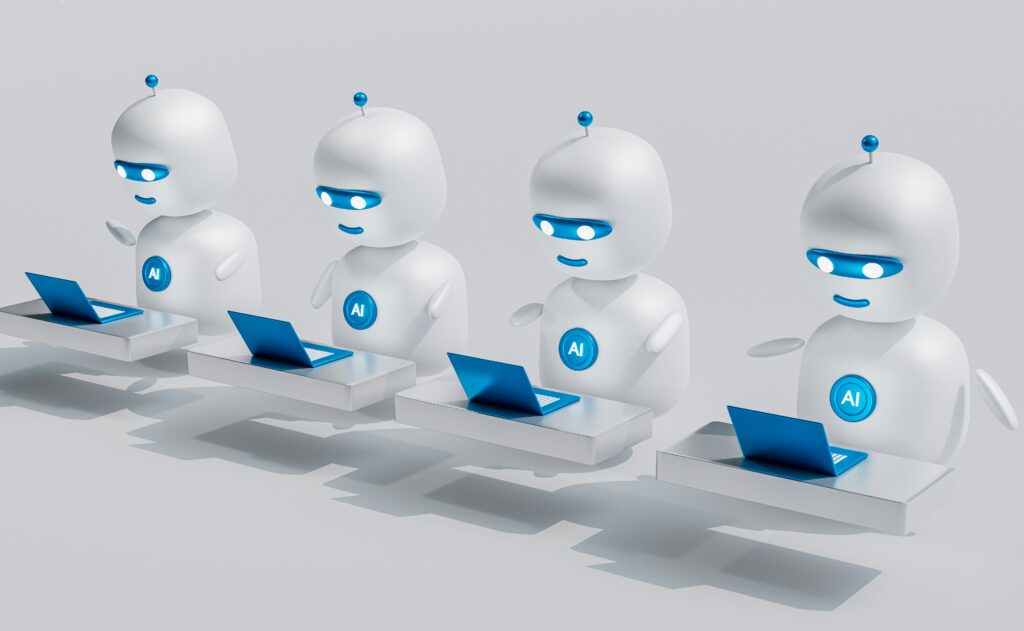Table of Contents
- Understanding Business Automation: The Role of AI and Chatbots
- The Rise of AI in Business Automation
- Chatbots: The Frontline of Customer Engagement
- Strategies for Implementing AI and Chatbots in Your Business
- 1. Identify Key Areas for Automation
- 2. Choose the Right Technology
- 3. Train Your AI Models
- Measuring the Impact of AI and Chatbots on Business Performance
- Case Studies: Successful Implementation of AI and Chatbots
- The Future of Business Automation: Trends and Innovations
- 1. Enhanced Personalization
- 2. Integration with Other Technologies
- 3. Ethical Considerations and Data Privacy
- Conclusion: Embracing the Future of Business Automation
In today’s fast-paced business environment, maximizing automation through AI and chatbots is not just a trend; it’s a necessity for companies aiming to enhance efficiency, improve customer engagement, and drive growth. This article delves into the transformative power of AI and chatbots in business automation, exploring strategies, opportunities, and the future landscape of digital innovation in global markets.
Understanding Business Automation: The Role of AI and Chatbots
Business automation refers to the use of technology to perform repetitive tasks without human intervention. With the advent of artificial intelligence (AI) and chatbots, organizations can streamline operations, reduce costs, and enhance customer experiences. According to a report by McKinsey, businesses that implement AI can increase their productivity by up to 40%.

The Rise of AI in Business Automation
AI technologies, including machine learning and natural language processing, are revolutionizing how businesses operate. By analyzing vast amounts of data, AI can identify patterns and make predictions that inform strategic decisions. For instance, AI-driven analytics can help businesses understand customer behavior, enabling personalized marketing strategies that significantly boost conversion rates.
Chatbots: The Frontline of Customer Engagement
Chatbots are AI-powered tools that simulate human conversation, providing instant responses to customer inquiries. A study by Gartner predicts that by 2025, 75% of customer service interactions will be powered by chatbots. This shift not only enhances customer satisfaction but also allows businesses to allocate human resources to more complex tasks.

Strategies for Implementing AI and Chatbots in Your Business
1. Identify Key Areas for Automation
Before implementing AI and chatbots, businesses should assess their operations to identify areas that can benefit from automation. Common areas include customer service, sales, marketing, and data analysis. By focusing on these key areas, companies can maximize their return on investment (ROI).
2. Choose the Right Technology
Not all AI and chatbot solutions are created equal. Businesses should evaluate various platforms based on their specific needs, scalability, and integration capabilities. Popular chatbot platforms include Dialogflow, Microsoft Bot Framework, and IBM Watson Assistant, each offering unique features tailored to different business requirements.
3. Train Your AI Models
To ensure the effectiveness of AI and chatbots, businesses must invest in training their models with relevant data. This process involves feeding the AI system with historical data and continuously updating it to improve accuracy. A well-trained AI can provide more relevant responses, enhancing the overall customer experience.

Measuring the Impact of AI and Chatbots on Business Performance
To understand the effectiveness of AI and chatbots, businesses should establish key performance indicators (KPIs) that align with their goals. Common KPIs include customer satisfaction scores, response times, and conversion rates. According to a survey by Salesforce, 64% of consumers say that the best part of their online shopping experience is being able to ask questions and receive quick answers.
Case Studies: Successful Implementation of AI and Chatbots
Several companies have successfully integrated AI and chatbots into their operations, yielding impressive results. For example, Sephora’s chatbot provides personalized product recommendations based on user preferences, leading to increased sales and customer loyalty. Similarly, H&M’s chatbot assists customers in finding clothing items, enhancing the shopping experience and driving traffic to their online store.
The Future of Business Automation: Trends and Innovations
1. Enhanced Personalization
The future of AI and chatbots lies in their ability to deliver hyper-personalized experiences. As technology advances, businesses will leverage AI to analyze customer data more effectively, allowing for tailored marketing strategies that resonate with individual preferences.
2. Integration with Other Technologies
AI and chatbots will increasingly integrate with other emerging technologies, such as the Internet of Things (IoT) and blockchain. This convergence will create new opportunities for businesses to enhance operational efficiency and security, ultimately leading to improved customer experiences.
3. Ethical Considerations and Data Privacy
As businesses adopt AI and chatbots, ethical considerations surrounding data privacy will become paramount. Companies must ensure compliance with regulations such as GDPR and CCPA while maintaining transparency with customers about how their data is used. Building trust will be essential for long-term success in the digital landscape.
Conclusion: Embracing the Future of Business Automation
Maximizing business automation with AI and chatbots is not just a strategic advantage; it is a critical component of modern entrepreneurship. By embracing these technologies, businesses can enhance efficiency, improve customer engagement, and drive growth in an increasingly competitive global market. As we look to the future, organizations that prioritize innovation and adaptability will be best positioned to thrive in the digital age.


